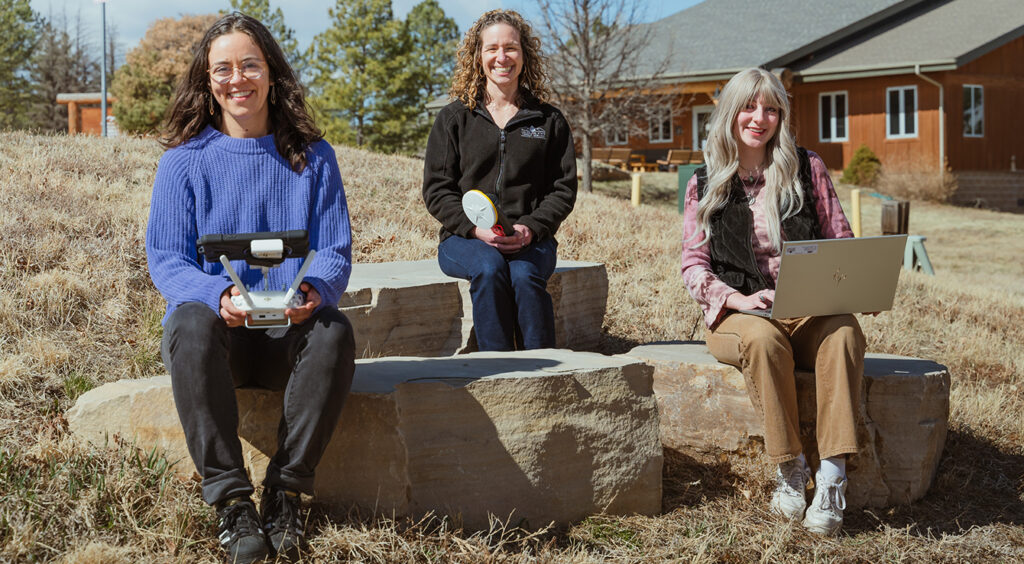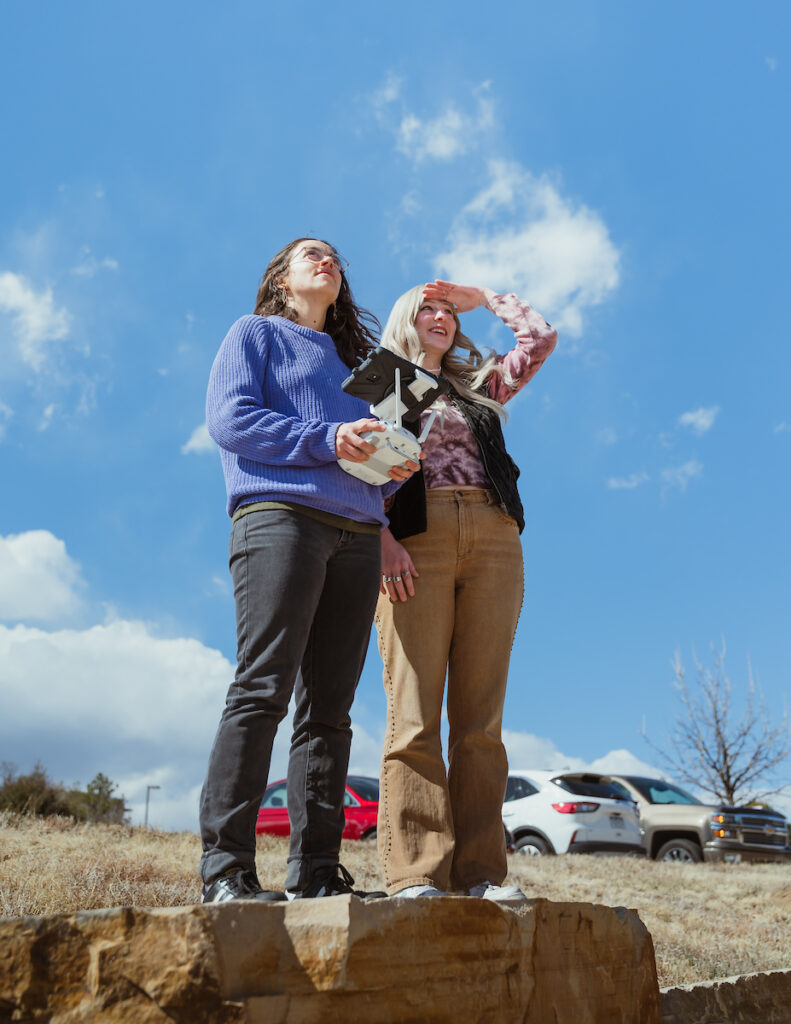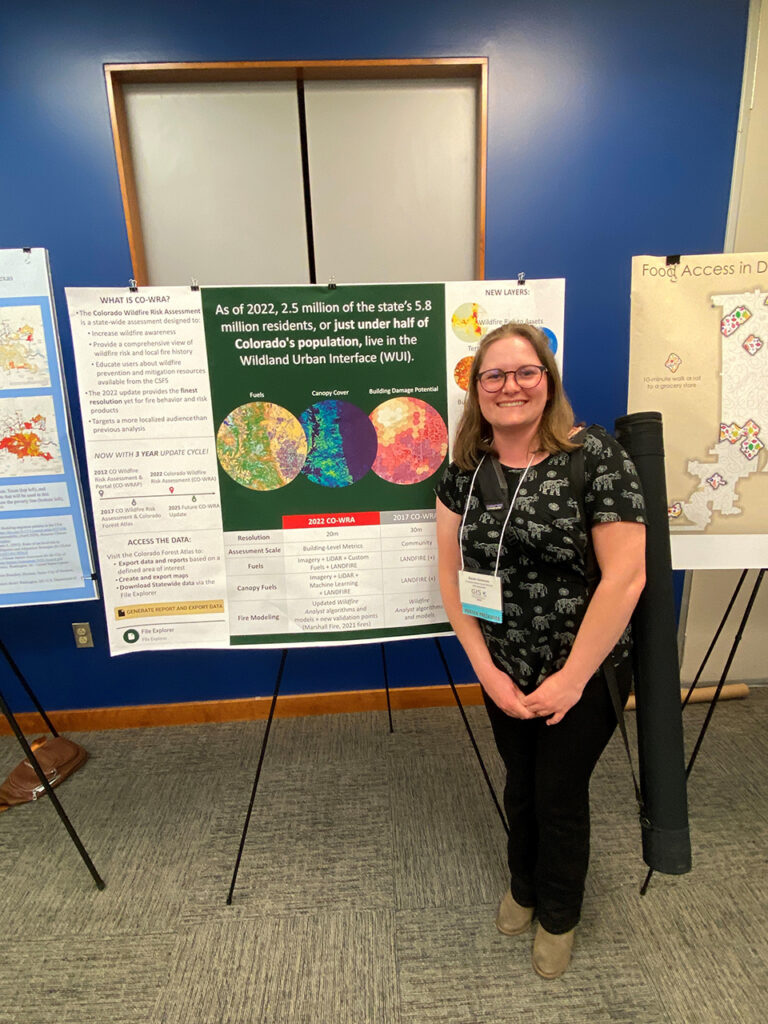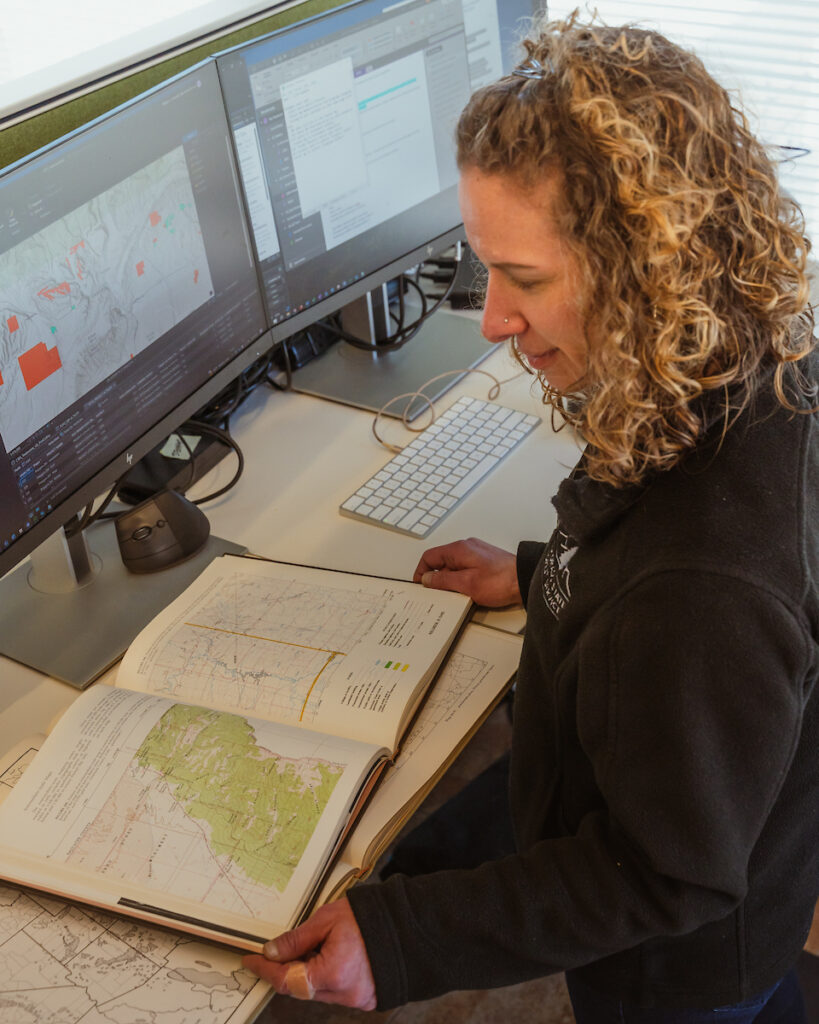
The Geographic Information Systems team at the Colorado State Forest Service supplies foresters, staff, partners and Colorado residents with a variety of crucial spatial data. Land ownership boundaries, wildfire risk and project maps are just a few of the topics that the GIS team works on every day to provide up-to-date, actionable maps and data to the people who need them. On International Women’s Day (March 8) meet the women on the GIS team: Phoebe Bauer, Rebecca Dannels, Hannah Tampier and Sarah Osborne (we got to chat with Sarah, but she wasn’t available on photo day).
What inspired you to pursue a career in GIS?
Rebecca: Two of the most influential factors in defining my GIS career are the lessons from my trailblazing mama and my love for the Rockies. Although my mother played a monumental role at the University of Utah as the first tenured female professor in the College of Engineering, her lessons at home were more subtle. Watching her toggle between repairing sprinklers in the morning, solving computer science and engineering problems during the day, and sewing dresses at night, taught me to build upon my interests and look for ways to combine them. I was unafraid of science and technology in school, and she offered me the initial bolster, and continued support, I needed to succeed in these subjects.
How did you get started in GIS?
Hannah: I first discovered GIS through a cartography course in my undergraduate Geography program, and I quickly fell in love with data manipulation and cartographic design. A few GIS courses later, and I knew that this field would offer the artistic and scientific elements that I had been looking for.
Phoebe: My background started in social sciences, and I didn’t expect to go into a GIS role focused on natural resources, but I feel so lucky to be working in support of our forested lands at CSFS now!
Sarah: I started working for the Colorado State Forest Service in 2019 as the Geospatial Data and Analysis Program intern and was hired full-time after graduating from Colorado State University.



What do you like about working in GIS and natural resources?
Phoebe: It’s a really fun mix of detail-oriented, analytical work and creativity. And there are so many different applications of GIS; it’s a pretty versatile field.
Sarah: Natural resources is a collaborative field where every voice contributes a different viewpoint.
What is your proudest professional accomplishment?
Sarah: Working for the CSFS! To work with so many passionate people contributing to the stewardship of Colorado’s forests is something I am grateful for every day.
Hannah: Working for the CSFS! This is my first real experience in the GIS industry, and I am so grateful to be a part of such a passionate and collaborative community. I am proud of the part I play in this important work, and I am lucky to have a team that I can lean on for support and inspiration.
What’s your advice for women starting a career in natural resources?
Rebecca: Trust yourself, ask the interesting questions and pursue them fiercely!
Sarah: Be confident in your skills and what you can contribute to a team.
Phoebe: Be open to opportunities that you don’t necessarily expect to be interested in. You might be surprised by something that turns out to be a really good fit, and even it it doesn’t it will give you valuable experience for finding something that is.

